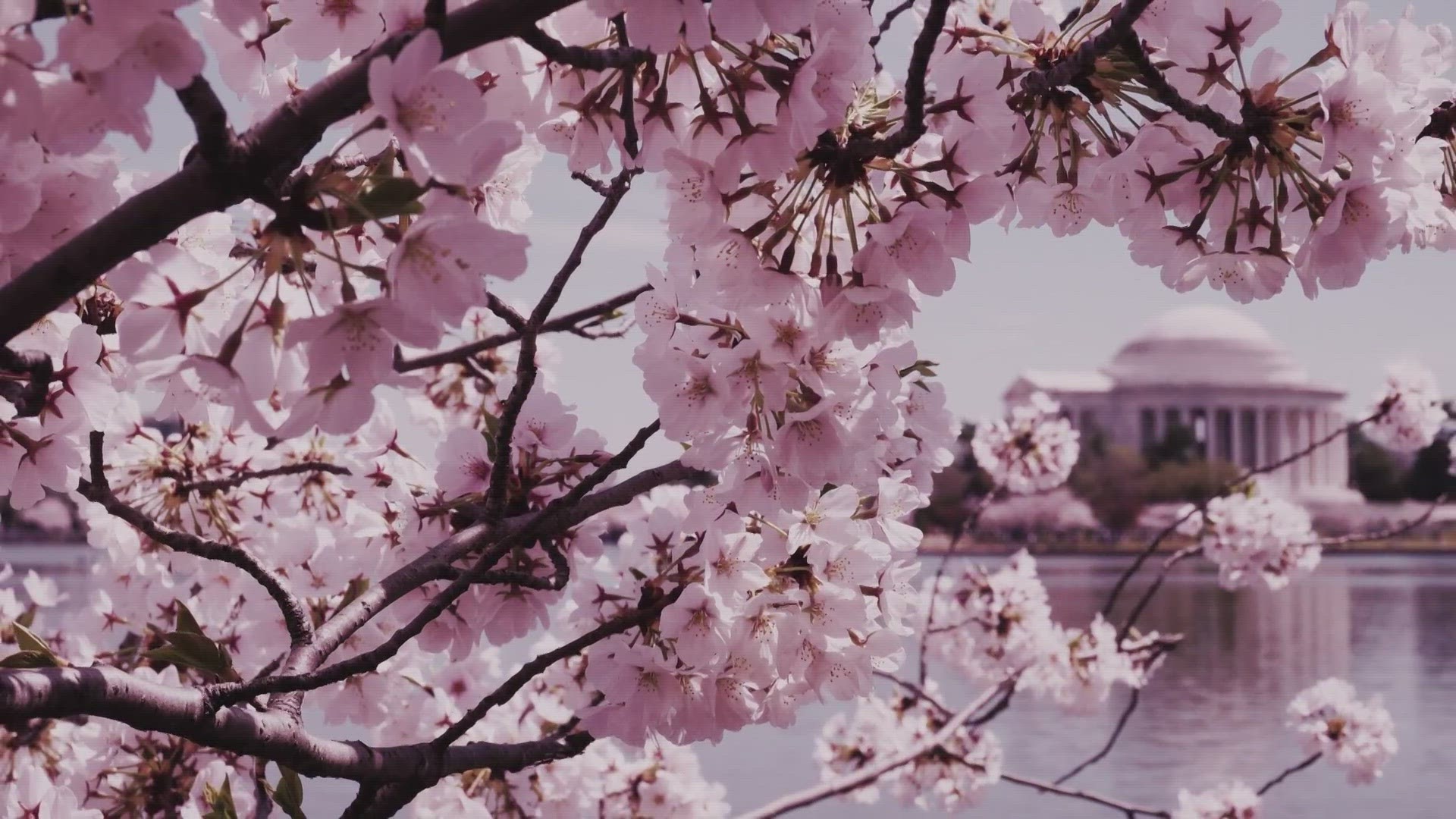WASHINGTON — The National Park Service announced its peak bloom prediction for the cherry blossoms around the Tidal Basin on Thursday. In a press conference, NPS peak bloom will be from March 23 to March 26, 2024. How do they come up with those dates? It turns out, predicting when the cherry trees will hit peak bloom is, in many ways, like forecasting the weather!
There is a lot that goes into an accurate forecast and a lot of factors that can impact the outcome. But unlike the National Park Service, the WUSA9 Weather Watch Team does not have a tree helping us out.
"There is one particular Yoshino tree that tends to run about two weeks or 10 days in advance of the rest of the trees around the Tidal Basin," explains Mike Litterst, the spokesperson for the National Mall.
It's called the indicator tree — and for good reason.
"It does give us a reliable indicator every year of where the rest of the trees are going to fall in the bloom cycle," Litterst said.
But it takes a lot more than a tree to predict peak bloom.
"We're looking at the historic records, what's happened in the last several years, 10 years going back," Litterst said. "But we're also, of course, looking at the near and long-range forecast. If we're expecting a warming trend over the next month, that's probably going to influence us to call it a little bit earlier, if we're expecting average or even colder, that's obviously going to push it back a little farther."
And warming global temperatures have been, undeniably, pushing peak bloom earlier and earlier.
"Over the last 10 years or so, probably even a little bit longer, we are seeing the trend, almost every year with peak bloom coming earlier than that average date of April 3rd/April 4th," adds Litterst.
But the bloom time of these iconic cherry trees is only one impact of climate change. Sea level rise combined with sinking seawalls around the Tidal Basin has led to flooding twice a day every day.
According to Litterst, "Ten years ago, that was an incident that happened a couple times a month in some places or irregularly.
And that inundation of water wreaks havoc on tree roots.
"You notice there is a huge gap between here and about a hundred yards away where there are no cherry trees," says Litterst. "They've all either had to be cut down or have died because of all of the water that's coming over the sea walls."
Construction is set to start this summer to rebuild the sea walls that have sunk 3 - 4 feet over the years.
"When that work is done, we can replant the trees and they'll have a much better chance at survival," adds Litterst.
A new walkway will also be constructed for visitors to enjoy.
Litterst exclaims, "Exciting project, it's going to take a couple of years, but looking forward to the positive impact on the Tidal Basin and the trees when it's done."
A reminder that peak bloom occurs when 70% of the Yoshino Cherry Trees around the Tidal Basin have bloomed.
Remember to plan ahead if you want to visit the trees. When you do go down to the Tidal Basin, pack your patience and prepare for crowds. Litterst suggests coming during the week earlier in the morning for less crowds and utilize public transportation. And remember, you may look at the trees and take photos, but do not touch them!

